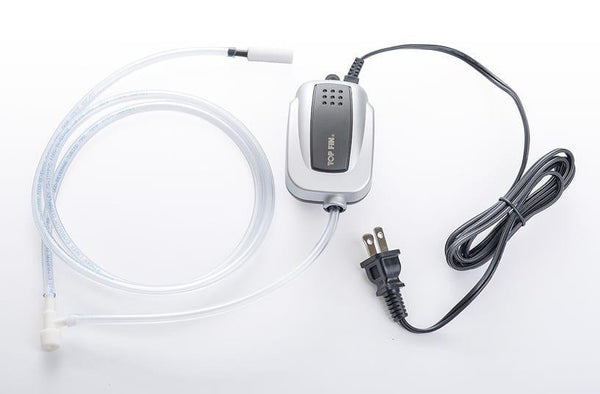Lab Anodes
 Using a Single Solution Electrode - We are using a single Platinum Plated Lab Anode in a beaker containing 24K Pure Gold Plating solution. For most plating applications the surface area of the anode should be about the same as the area of the surface to be plated - Cathode.
Using a Single Solution Electrode - We are using a single Platinum Plated Lab Anode in a beaker containing 24K Pure Gold Plating solution. For most plating applications the surface area of the anode should be about the same as the area of the surface to be plated - Cathode.
Note: the Black lead (-) is connected to the item to be plated, the cathode. The Red lead (+) is connected to the solution electrode, the anode. In this configuration the piece being plated should be rotated occasionally since the deposition rate may be greater on the areas that are facing the anode and less on the side opposite the anode.
 Using Multiple Solution Electrodes - Here we are using a group of four Platinum Plated Lab Anodes in a beaker containing 24K Pure Gold Plating solution. The electrodes are connected to a 1/8" polyethylene strip to hold them into position. This circular configuration allows more consistent "throw" than a single electrode since the deposition rate can depend on the path between the electrode and the surface of the area being treated.
Using Multiple Solution Electrodes - Here we are using a group of four Platinum Plated Lab Anodes in a beaker containing 24K Pure Gold Plating solution. The electrodes are connected to a 1/8" polyethylene strip to hold them into position. This circular configuration allows more consistent "throw" than a single electrode since the deposition rate can depend on the path between the electrode and the surface of the area being treated.
Note: For many solutions it is very important that metals that could contaminate the solution is not allowed in contact with the solution. Titanium is quite inert and will not negatively affect most solutions. However, due of the porous nature of the platinum deposit the titanium substrate will come into contact with the solution, this may cause anodization of the titanium substrate in which case the electrical conductivity between the substrate and the solution will be maintained by the platinum coating.
*These setups would work with any of our Anode Stock.

Anode Stock - Bagged Nickel
from $45.00

ProLab Graphite Anode Inserts
from $38.50

Anode Stock - Copper
from $15.00



